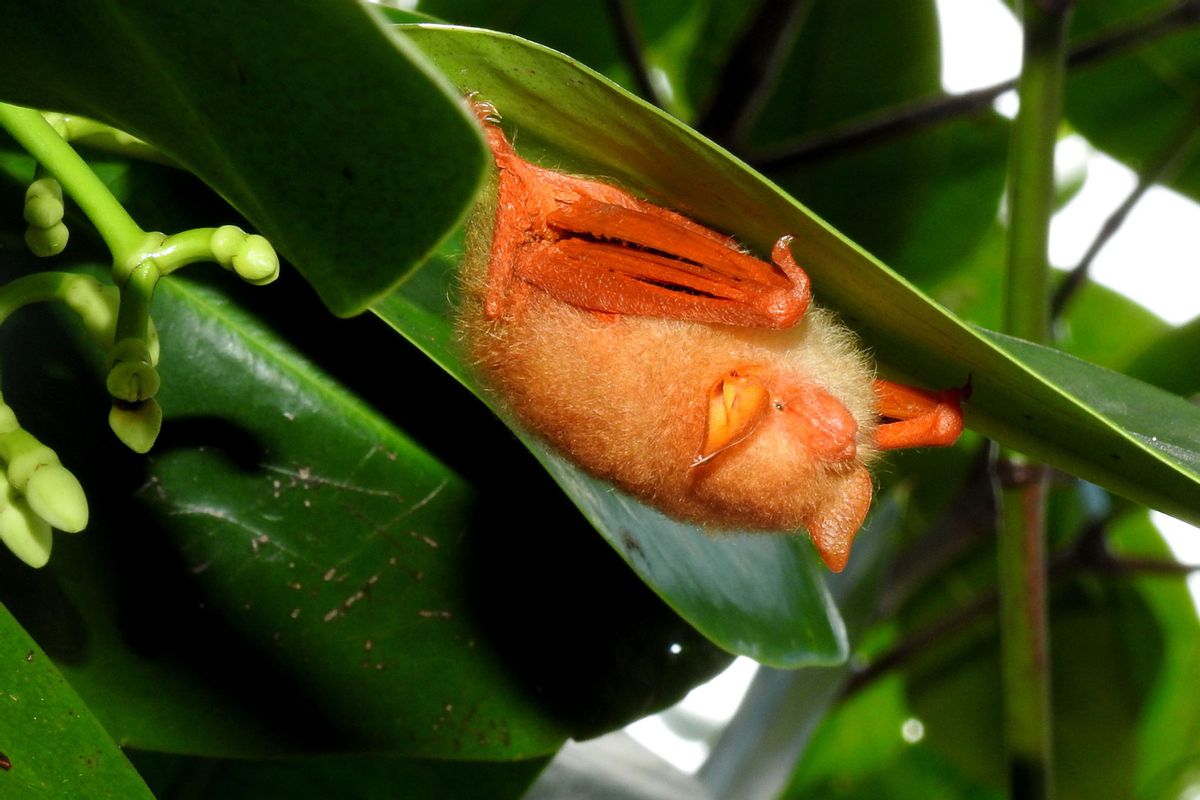In the first comprehensive study ever put together on the illegal dead bat ornament trade, researchers publishing in the European Journal of Wildlife Research learned that one species in particular — the painted woolly bat (Kerivoula picta) — is disproportionately targeted.
A bright orange and fuzzy bat with a wingspan of 18-30 cm (around 7 to 12 inches) and a body length of 3-5.5 cm (1.2-2.2 in), the painted woolly bat is widely sold as jewelry, jarred curios and Halloween decorations by online retailers like Etsy, eBay and Amazon, according to the researchers from the University of California, Davis, City University of New York-Queens College and the International Union of the Conservation of Nature’s (IUCN) Bat Trade Working Group. They explain in their study that the bats are slaughtered in Asia, then imported to the United States.
"Overall, our study paints a troubling picture of a trade whose ecological impacts remain unknown (in the absence of population data) but that is likely illegal, unethical and unsustainable and may pose a biosecurity risk," the authors write. While it is unclear whether or not the bat trade is accelerating, given the paltry amount of concrete long-term data, "the global rise of e-commerce could exacerbate it just by enabling consumers anywhere to order bats to their homes and businesses, where previously they would have had to travel to physical markets," the authors explain.
The painted wooly bat comprised the majority of the bats among the 856 listings studied by the author (215), but there were other bat species as well — many of them painted to look more like the K. picta. Tennessee sold far more bats than any other state, among other things accounting for 45% of the painted wooly bat listings. To protect these bats, the authors recommend "formal legal protection for K. picta (by inclusion in the Convention on International Trade in Endangered Species), field studies to understand population trends and the supply chain and social pressure to curb demand, including grassroots action and research to understand its effectiveness."



Shares